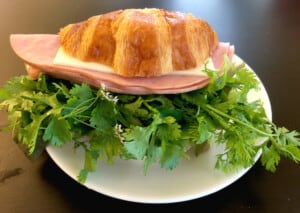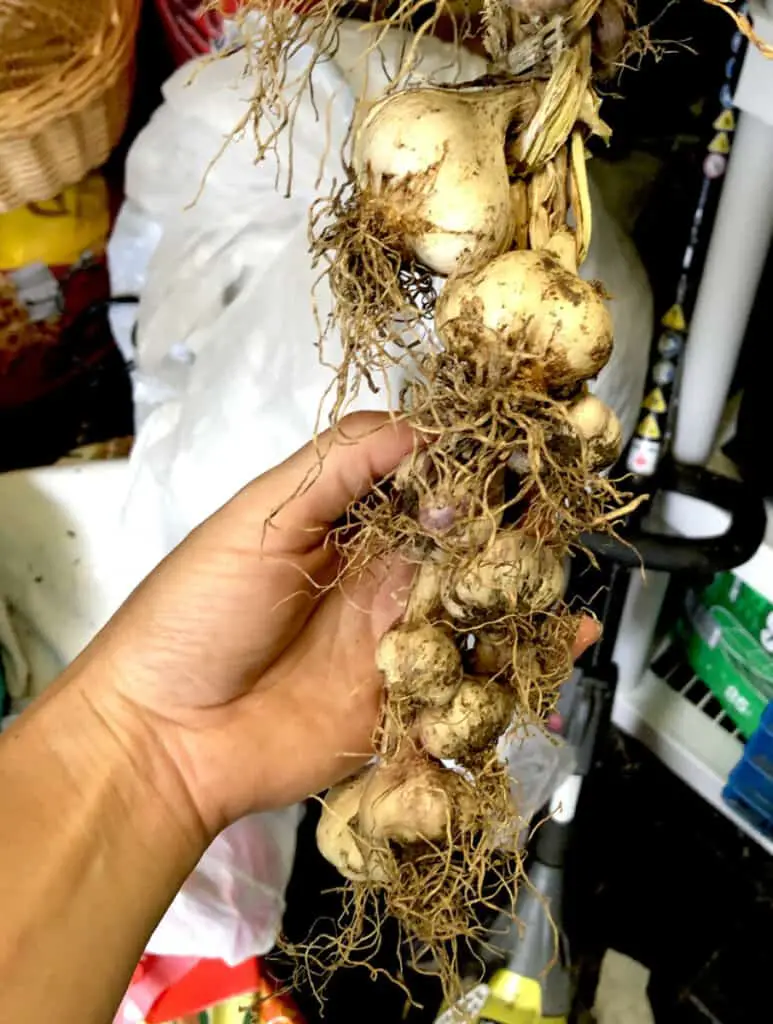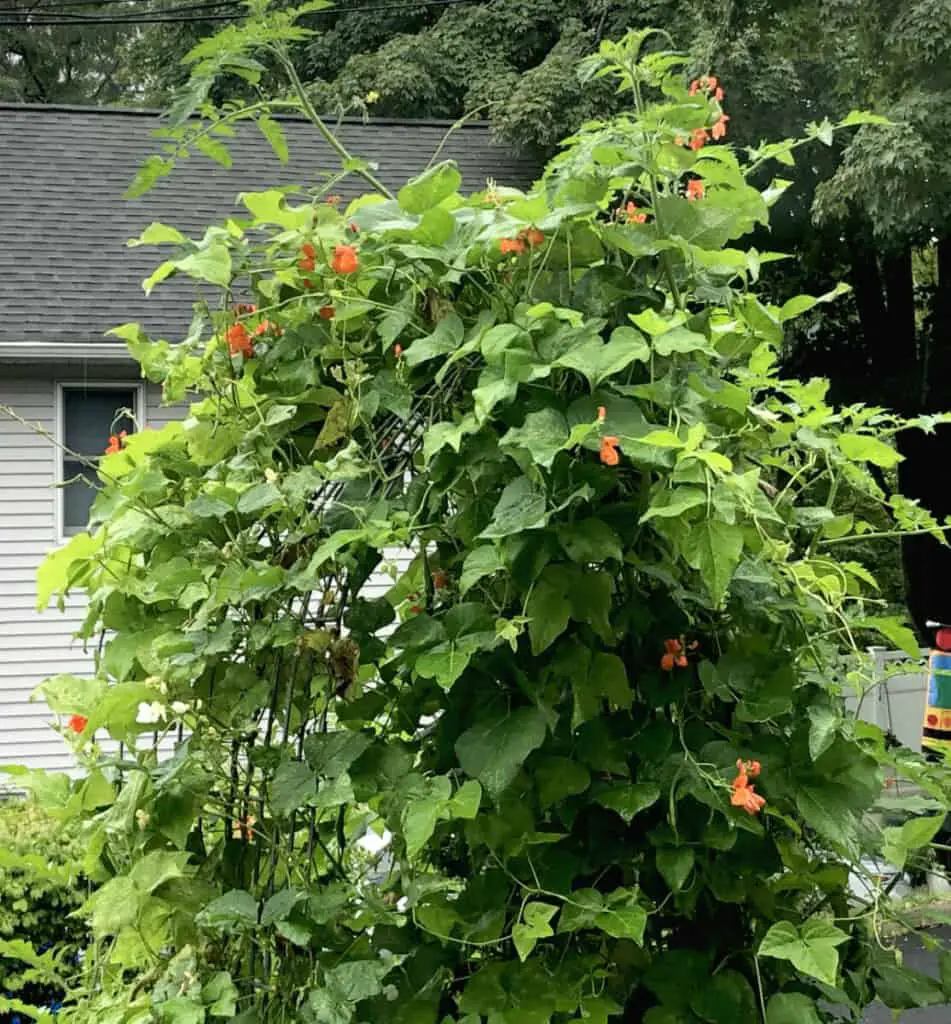Staple foods are the ones that your family enjoys eating and are a must in your kitchen and pantry. They last long, store, and preserve well. My growing space is a pantry staple garden where I grow food that we like to cook with and store for winter.
The best staple foods to grow in a garden are first of all that your family likes to eat, they store and preserve well. They also provide you with lots of nutrition and calories. Some of the most favorite staple foods to grow in a home garden include cool-season vegetables like beets, carrots, parsnip, potatoes, cauliflower, broccoli, cabbage, rutabaga, Brussel sprouts, turnip. Cold hardy allium vegetables such as garlic, onion, leeks, and scallions. Then when the warm season comes, you can grow warm-season produce including, tomatoes, peppers, cucumbers, summer squash and winter squash, beans, corn, and sweet potatoes. I also include herbs, because they don’t take much space but impart lots of great flavor to any meal. I can’t even imagine cooking without herbs, especially thyme, rosemary, basil, cilantro, and dill.

What are the staples of a pantry garden?
The staples of a pantry garden are vegetables and fruits that form the core of your family meals. It is the produce that you use most in your kitchen when cooking, and find the most of on your pantry shelves, and inside your freezer.
Staple vegetables should be easy to grow and they should yield plentifully so you could get the most out of your growing space. Most of them should be easy to eat fresh and easy for you to store and preserve in your current situation, with the current preserving knowledge you have. Let’s say you don’t know how to can vegetables and have no freeze space available, but grow lots of tomatoes to make tomato sauce. You need to think ahead about how will you preserve the sauce. Will you learn to can it? Will you purchase an extra freezer to freeze it? If your answer is no, then what method will you use to preserve all those tomatoes when harvest time comes?
If you are not able to preserve food by processing it, but you are able to store it on shelves or in a cellar, or a root clump, then you should grow to produce that is shelf stable or able to be stored using the method you are capable of. Or perhaps you need to expand your knowledge and learn new methods of preservation. As you choose your staples to grow for the pantry garden, plan ahead the storage and preservation methods, so you are ready when the harvest comes.
How to identify your family’s staple foods to grow in your garden
Each family’s filled shopping cart or refrigerator space would look different. We all like different things to eat. Therefore, each gardener’s list of foods to grow might be quite different. What I grow in my garden and is my hard-core staple produce to grow, might be quite different from yours. Let me guide you through two easy steps on how to identify what you should be growing in your garden.

Step one, is looking inside your fridge and shopping cart, what is there that you buy most often? Is it carrots, potatoes, or green leaves? Write down what produce you shop for most, it should be on your staples list.
Step two, deconstruct your family meals. Let’s say you make pizza for dinner very often, and you top it with some pepper, tomato sauce, corn, and spinach. Then you should grow peppers, corn, and spinach. And for the tomato-based pizza sauce, you should probably grow tomatoes, garlic, herbs, onions, and carrots.
Deconstruct several of your family’s favorite meals and put the vegetables you use to prepare those meals on your pantry stocking garden list for you to grow them.
Each household has different stapes since we all enjoy various different things. What are your must-to-have vegetables and fruit in your kitchen and pantry?
Vegetables that store best in storage without refrigeration
There are quite a lot of vegetables that store well without any refrigeration. They store well in a cool, dark place, some in a dry environment and some in a bit humid environment but they can do without being stored in the fridge.
Vegetables that store best in storage without refrigeration are garlic, butternut squash, winter squash, spaghetti squash, onion, cabbage, and all root vegetables such as carrots, parsnip, potatoes, sweet potatoes, and rutabaga. Dry beans and herbs store very well at room temperature if dehydrated properly and sealed in a container.

Most high-yielding fruits and vegetables
When choosing your pantry staples to grow in your probably limited growing space, you should definitely consider how much each vegetable will yield in the space it will occupy. Consider, there are plants that yield only one fruit, but there are also plants that yield multiple fruits. For example, if you plant one seed cauliflower, you will get one head of cauliflower. If you plant one seed of a tomato, you will get lots of tomatoes. Especially if your growing space is very small and very limited, or if you have a very short growing season, choose vegetables that produce a lot should you only plant one or two plants of them. Vegetables that produce a lot from one plant are tomatoes, beans, peppers, potatoes, sweet potatoes, zucchini, cucumbers, and leafy greens.
I also consider the weight and fruit density, for that reason I like to grow winter squash. I can get 2 large butternut squashes off of one plant. That is a lot of pounds of food coming off of one plant! Plus they are so easy to grow in my local area. They store the best! After I cure them for 2 weeks in the sun, I just put them on the shelf in my basement and they stay good for up to a year. Butternut squash is my pantry staple to grow each year. I can’t even imagine a garden without them. The same goes for spaghetti squash.
I grow pole beans and bush beans every year. One plant delivers so many beans. I just dry them in their shell in a mesh laundry bag hanging in a shed and use them as needed. They are full of lovely flowers growing, local hummingbirds love them and they grow and store so easily. I can’t imagine my garden without pole beans!

The best fruit to grow and store would definitely be stone fruit and apples as well as berries of all kinds.
But in my area, growing food is simply growing it for wildlife. We have lots of pests that like our sweet fruit! It’s hard to guard apples that store best through the winter, and berries that store well in the freezer. Wildlife like squirrels and chipmunks simply devour most of my harvest and I am just so tired to fight them off while losing my battle.
I currently grow peaches that yielded well and fast, I strongly recommend growing tree fruit. I also grow raspberries and strawberries. But I have to say chipmunks are winning the battle so far, especially with the berries.
Choose produce that grows best in your local area
I grow my garden in zone 6. But let me tell you not all zone 6 is the same. I might grow in zone 6 near the ocean, but you might grow in zone 6 inland. Those can be very different growing zones. Also, soil, climate, elevation, wildlife, and rainfall, all affect what grows best in your local area. As you work on your staples to grow in your pantry garden, make sure you grow what does best in your local area.
How to find out what grows best in your area
Finding out what grows best in your local area is one of the easiest tasks there is, especially in this time and age. As a beginner gardener, and even now, I often visited local gardening groups online and simply asked what does best in their gardens. And I got the answers.
The next good way to find out what grows best where you are located is to visit the local farmers market. Where I live you will not find clementines, oranges, or avocados. It’s simply too old here for those fruits. But you can surely find beautiful broccoli, tomatoes of all kinds, cauliflower, cabbage, and various leafy greens. I see what local growers have to offer and those veggies probably do best here since they all grow in my close proximity.
I often visit local farms and see what they have to offer and walk or drive by their growing space and see what they grow. I should probably be growing the same thing.
As you browse your local area hunting down what grows best, enjoy the process. Gardening is not only about the harvest, but it’s about the whole process and experience from seed to sitting down at the plate of delicious food that came from your garden.
What can I grow in a pantry garden
What is the easiest food to grow for pantry storage?
How do I start a pantry-stocking garden?

